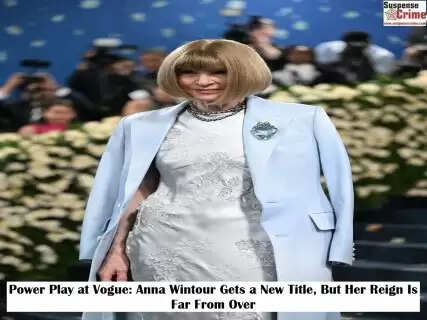
Suspense crime, Digital Desk : For a moment, the fashion world held its collective breath. News that Anna Wintour—the industry's most formidable figure, with her iconic bob and signature sunglasses—was "stepping down" as Editor-in-Chief of Vogue sent shockwaves across the internet. But the reality is far more complex and strategic than a simple departure.While Wintour is indeed relinquishing the specific title of American Vogue's Editor-in-Chief after a historic 36-year run, she is not going anywhere. In fact, this move solidifies her power on a global scale.This change is part of a major restructuring at parent company Condé Nast. Wintour will continue in her powerful roles as the company's Global Chief Content Officer and Vogue's Global Editorial Director. In this capacity, she will oversee the brand's creative vision across all its international editions.So, what does this mean in practice? Condé Nast will appoint a new "Head of Editorial Content" for Vogue, who will manage the day-to-day operations of the flagship publication. However, this new leader will report directly to Wintour. In essence, the title on the masthead is changing, but the final authority is not. Wintour is moving from being the hands-on general to the supreme commander, directing the global strategy from above.Since taking the helm in 1988, Wintour transformed Vogue from a simple fashion magazine into a cultural bible. Her influence is unparalleled, from launching the careers of countless designers and models to turning the Met Gala into the world's most exclusive and star-studded event. Her formidable reputation even inspired the character of Miranda Priestly in "The Devil Wears Prada."This move isn't an end to the Wintour era; it's an evolution. By stepping back from the daily grind of one edition, she is cementing her control over the entire Vogue empire for the foreseeable future. The queen isn't abdicating the throne—she's just redesigning the palace.
Around the web

